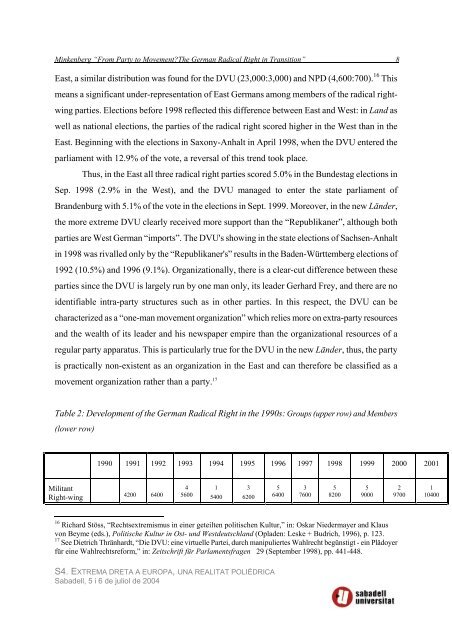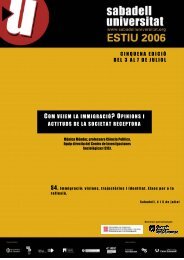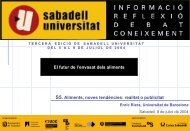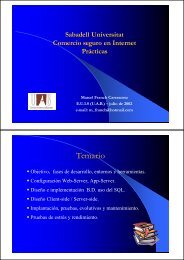From Party to Movement? The German Radical Right
From Party to Movement? The German Radical Right
From Party to Movement? The German Radical Right
You also want an ePaper? Increase the reach of your titles
YUMPU automatically turns print PDFs into web optimized ePapers that Google loves.
Minkenberg “<strong>From</strong> <strong>Party</strong> <strong>to</strong> <strong>Movement</strong>?<strong>The</strong> <strong>German</strong> <strong>Radical</strong> <strong>Right</strong> in Transition” 8<br />
East, a similar distribution was found for the DVU (23,000:3,000) and NPD (4,600:700). 16 This<br />
means a significant under-representation of East <strong>German</strong>s among members of the radical right-<br />
wing parties. Elections before 1998 reflected this difference between East and West: in Land as<br />
well as national elections, the parties of the radical right scored higher in the West than in the<br />
East. Beginning with the elections in Saxony-Anhalt in April 1998, when the DVU entered the<br />
parliament with 12.9% of the vote, a reversal of this trend <strong>to</strong>ok place.<br />
Thus, in the East all three radical right parties scored 5.0% in the Bundestag elections in<br />
Sep. 1998 (2.9% in the West), and the DVU managed <strong>to</strong> enter the state parliament of<br />
Brandenburg with 5.1% of the vote in the elections in Sept. 1999. Moreover, in the new Länder,<br />
the more extreme DVU clearly received more support than the “Republikaner”, although both<br />
parties are West <strong>German</strong> “imports”. <strong>The</strong> DVU's showing in the state elections of Sachsen-Anhalt<br />
in 1998 was rivalled only by the “Republikaner's” results in the Baden-Württemberg elections of<br />
1992 (10.5%) and 1996 (9.1%). Organizationally, there is a clear-cut difference between these<br />
parties since the DVU is largely run by one man only, its leader Gerhard Frey, and there are no<br />
identifiable intra-party structures such as in other parties. In this respect, the DVU can be<br />
characterized as a “one-man movement organization” which relies more on extra-party resources<br />
and the wealth of its leader and his newspaper empire than the organizational resources of a<br />
regular party apparatus. This is particularly true for the DVU in the new Länder, thus, the party<br />
is practically non-existent as an organization in the East and can therefore be classified as a<br />
movement organization rather than a party. 17<br />
Table 2: Development of the <strong>German</strong> <strong>Radical</strong> <strong>Right</strong> in the 1990s: Groups (upper row) and Members<br />
(lower row)<br />
Militant<br />
<strong>Right</strong>-wing<br />
1990<br />
1991<br />
4200<br />
1992<br />
6400<br />
1993<br />
4<br />
5600<br />
1994<br />
1995<br />
S4. EXTREMA DRETA A EUROPA, UNA REALITAT POLIÈDRICA<br />
Sabadell, 5 i 6 de juliol de 2004<br />
1<br />
5400<br />
16 Richard Stöss, “Rechtsextremismus in einer geteilten politischen Kultur,” in: Oskar Niedermayer and Klaus<br />
von Beyme (eds.), Politische Kultur in Ost- und Westdeutschland (Opladen: Leske + Budrich, 1996), p. 123.<br />
17 See Dietrich Thränhardt, “Die DVU: eine virtuelle Partei, durch manipuliertes Wahlrecht begünstigt - ein Plädoyer<br />
für eine Wahlrechtsreform,” in: Zeitschrift für Parlamentsfragen 29 (September 1998), pp. 441-448.<br />
3<br />
6200<br />
1996<br />
5<br />
6400<br />
1997<br />
3<br />
7600<br />
1998<br />
5<br />
8200<br />
1999<br />
5<br />
9000<br />
2000<br />
2<br />
9700<br />
2001<br />
1<br />
10400













